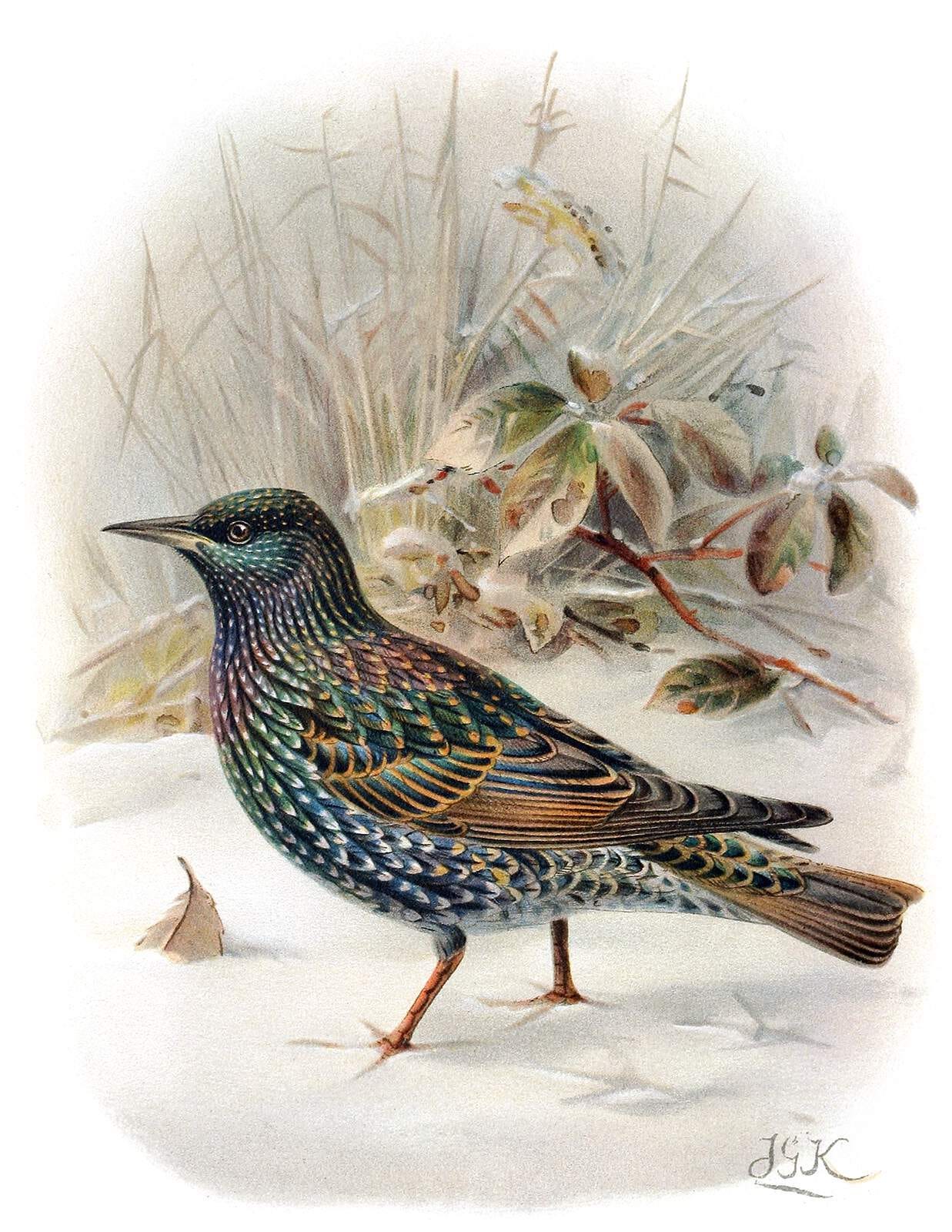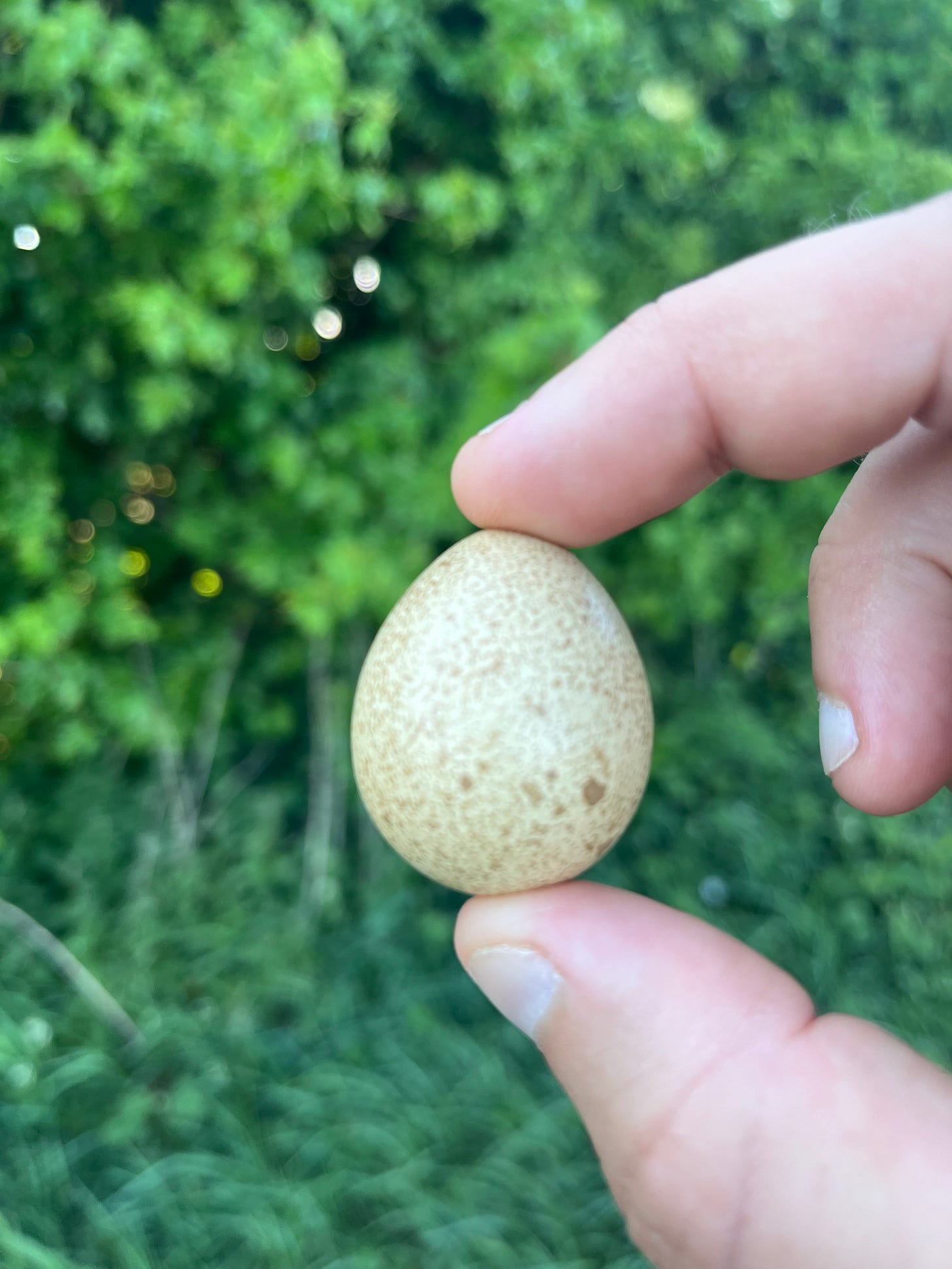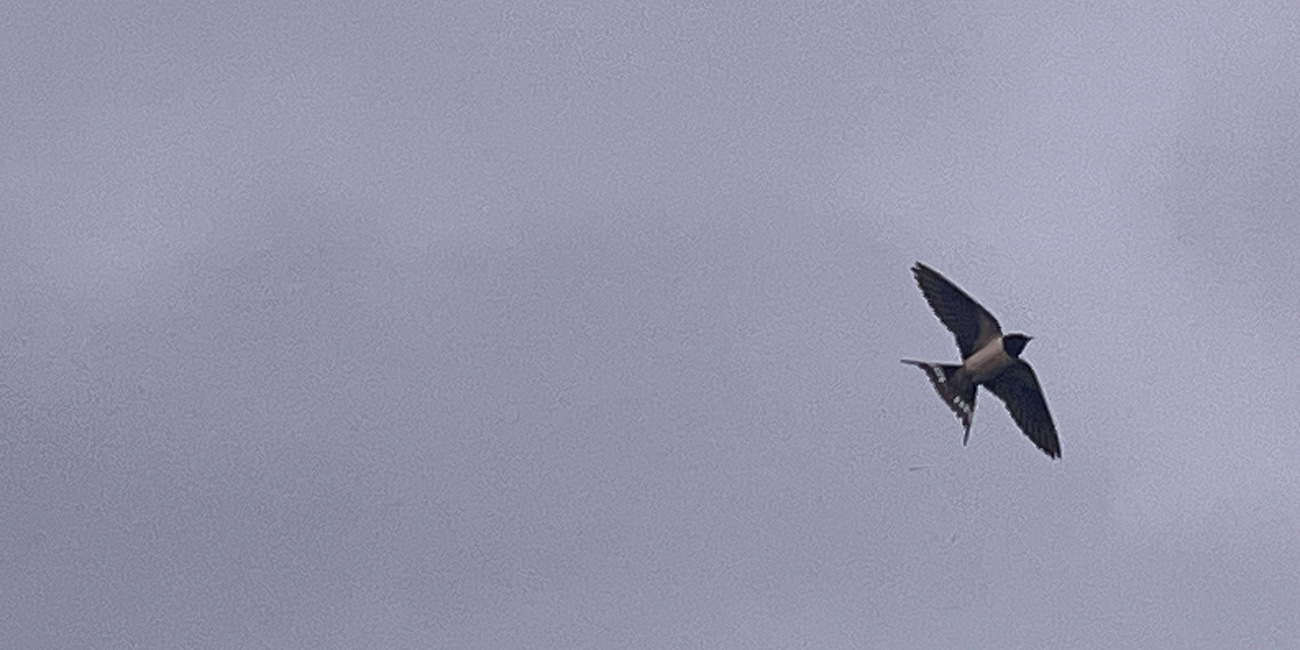4/5
It showers in the morning. The temperature has fallen and we are plunged into what feels like April weather. The skies are dramatic all day—dark grey cumulus towering and smudging out the blue, followed by bursts of golden light. A muntjac wanders into the garden and runs once it realises that Ceci is pulling weeds just metres away.
6/5
The day is grey and cold, a plunge back into late winter. Rain falls in soft soaking bursts. The washing hangs, dripping on the line.
After work we walk through the village, taking the bridleway up to the old brickyard woods. The footpath from the road has become overgrown, barely a shoulder’s width between the fresh growth of the understory. The track by the long hedgerow is dry and dusty as if there was no rain at all. I’m guessing it was soaked up quickly into the cracked earth, or else rolled off into the drainage ditches. The field is like a green sea, the surface rippled by the breeze. The crop must be rye, we think, but don’t know. It looks and feels soft. I run my hand across the surface of its stalks as I walk, as if trailing a hand from the edge of a boat. The sea is a pale green tinged with a purplish red from the developing seed. Ahead of us a pheasant stands and struts and dips in and out of the hedge and the crop. A red kite circles the wood. As we enter the cover of trees, the air turns suddenly cool. The dogs that live in the house close by begin to bark. Where the sun meets the woodland floor there is a river of red campions. The leaves on the birches shimmer. We return the way we came and I find myself eager to get home. The bleak work-borne mood I had hoped would lift remains in me.
The sun breaks through a little later and I help my daughter with a photo assignment about perspective. We wander the garden, taking pictures of random objects from strange angles and for a moment I feel like a child again, able to see the world anew, the most commonplace things defamiliarized by the weirdness of the lens.
7/5
On the way to Earlham Hall for my workshop I cross a corner of the park, following a desire line into the trees towards the walled Dutch garden. The path passes a shallow, circular indentation in the grass about eight meters in diameter, a ghost pond which fills up with water in wet winters. It has been dry all year, but in its gentle bowl, dock leaves are growing on the damp ground.
9/5
I take a few moments after the school run before I plunge into a morning of shoulder-hunched reading to listen to the bird song in the garden. I would rather not be working today as technically it is my day off, but such are the demands of an academic workload. I should be doing my own writing today or be out somewhere in the woods. I close my eyes. There is a wren to the left, quite close by, and another further off to the right. A blackcap is somewhere in the copse. A thrush. A great tit. The usual mix of country garden birds. I try to let it soothe my rising anxiety.
10/5
Bright sunshine, but it will be another Saturday dominated by reading. It is warm enough to work outside and so I sit at the table at the end of the garden, shaded by a willow, the cool of the copse to my back, and birdsong around me.
We find what looks like the remains of a carder bee nest in a flowerbed at the front of our house. Carder bees like to nest above ground in matted undergrowth or in old mouse runs, and it looks as though this one had made a home in the somewhat overgrown plants that overflow from the beds onto the surrounding gravel. It looks as though somebody has dug up the nest, disturbing and uprooting the plants in the process. A handful of bees remain in the bottom of the small pit. I’m not sure what might have dug it up—perhaps a badger.

11/05
We grow much of our own food. Today I planted out the first of the runner beans. They have been growing in old cardboard toilet roll tubes in the greenhouse. The cardboard tube, compost, and bean plant all go into the ground. The cardboard will slowly decompose. The potatoes are merging more slowly this year. All the first earlies have taken an age to come up and have been overtaken by the second earlies. Perhaps I buried them a little too deep in their rows, or it might just be that the seedstock this year isn’t as good as last year (when we produced our first spuds in record time—seven weeks or so). We are already at about six weeks, and some of the plants are only just coming through. It throws off the carefully calibrated plan to put the courgettes in after the first earlies if we have to wait another month to begin cropping.
Growing is good for the belly and the soul. The satisfaction of growing food, of knowing its journey from seed to plate, is immense, and ensures a sustainability that can’t easily be achieved even with the most conscientious shopping. A bag of seed potatoes returns the investment tenfold.
We have starlings in the hedgerow. I catch sight of them in the morning, four of them pecking on the lawn, probably after ants (there is a huge red ant mound in the long grass of our nature friendly area). They clock me and take flight in four different directions like a group of kids caught red-handed. Later I hear a rapid clicking coming from the hedge, like the sound of someone winding on the film on a manual camera, followed by a squeak, and toot, and more clicks. Starlings are remarkable. Their feathers have an oily black iridescence and their song making is full of intricate mimicry. I begin to wonder whether the meow from our cat Benji, that we heard at lunch time and had us hunting for him all over the garden when he was safely curled up on the sofa, wasn’t a starling impersonating him. They have been known to mimic human speech when in close enough proximity, as well as car alarms, and the various chimes and alerts of mobile phones. Their ability to reproduce a quite extraordinary wide variation of complex sounds in their vocalisations is due to a syrinx which contains more muscles than that of other birds. Why do they do it? My guess would be that it deters predators by imitating sounds of potential threats, such as humans, cats, and machinery. It is the first time I’ve spotted them in our garden hedge, though I saw a small flock close by last year.
Later, we lie on the lawn on picnic blankets. I’ve been working on a report for the last hour or so and the grass in the sunshine was too much of a temptation. It feels like summer. My skin is warming and the inside of my eyelids glow with light. My back is flat, my knees raised. I press my spine against the cool ground. The leaves of the oak above the hen run are sighing in the wind. The starlings are in the crown of the tree, a small flock of them churring in noisy communion. The lawn is old and sweet smelling. It has been here hundreds of years in one form or other and is a complex mix of different grasses and herbs. A few of the starlings dart to the hedgerow and start up a song of clicks and whistles. Two red kites linger high over the garden, and for a moment I wonder whether they think that we are carrion. For the first time in what feels like a long time I can feel my breathing calming and the knots in my back give a little. I’ve been finding it increasingly difficult to unwind when my work seems to continually overspill my working hours. This is helping, a little, perhaps not enough, but I’m conscious of how fortunate we are to live here, surrounded by greenery and birdsong, so much birdsong that it drowns out the hum of the cars on the nearby roads.
Later still, we walk up the lanes towards the top fields. It is still warm into the early evening. Skylarks are singing over the fields left to pasture. The ash trees are finally coming into leaf. Oak before ash, in for a splash—the saying goes, meaning a dry summer. This is certainly a dry spring. The roads are dusty, the soil turning to a sandy dust peppered with flint gravel along the verges. A passing car kicks up a cloud of it. On the track by the top fields we find a speckled egg on the ground. It is a creamy colour, speckled with brown. One side has been busted in, the embryo stolen. Stolen by a magpie perhaps. It is a reminder of the brutal reality of natural survival. The distant sound of music and applause drifts over from from some open air gig or other, carried in the breeze. On the tarmac of the lanes we watch a fat green caterpillar cross the road with quiet determination.
Many thanks to those of you who have upgraded your subscriptions to support my writing on here. Thanks are also due to those Substackers recommending this page: History, Landscape, Birds, and Stories; Hinterland; All My Old Haunts; The Guild of Master Procrastinators; Another Disappointing Walk, and Some Flowers Soon.
If you’d prefer not to upgrade but would still like to show your financial appreciation, you can also use my Stripe tip jar.
About ‘This Party’s Over’
On ‘This Party’s Over’ I publish my creative non-fiction, personal essays, place writing, and a country diary. My ‘Another Country Diary’ pieces are my most regular posts (about three a month).
The country diary can express a sort of local distinctiveness, explore a personal set of interactions with a landscape, and in doing so, almost accidentally, tease out the way the natural world is entwined with culture and politics. It can be a quietly radical and uncanny form, or sometimes just plain parochial, oddball in its specificity.
If you enjoyed this post, then follow the link to the last one to read more, and, if you are feeling in the mood to, like, share, and subscribe for free.
Another Country Diary #24
Many thanks to those of you who have upgraded your subscriptions to support my writing on here. Thanks are also due to those Substackers recommending this page: History, Landscape, Birds, and Stories…





